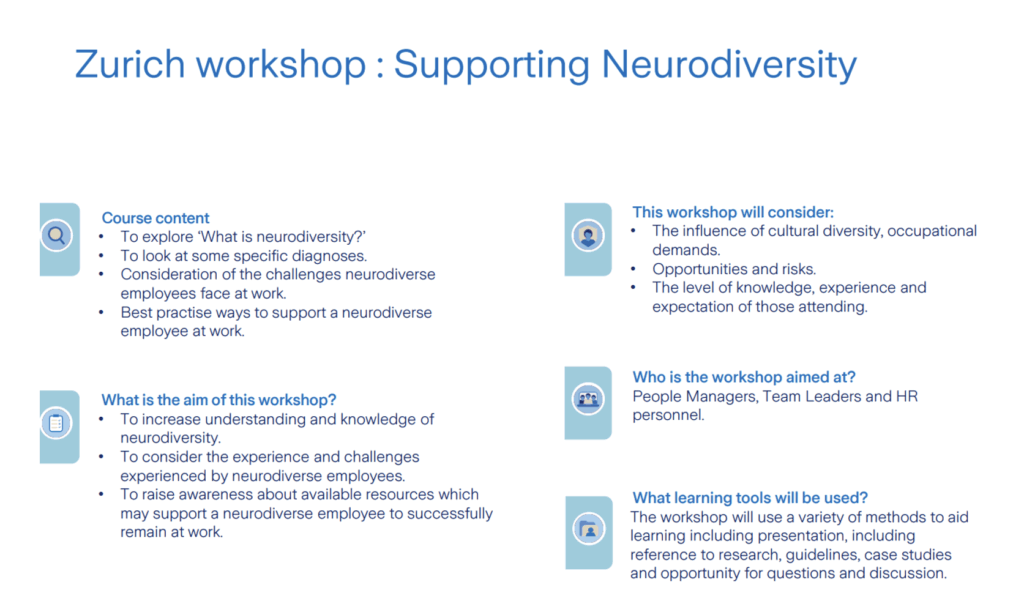Neurodiversity can impact everyone.
We were lucky. Our son went to an incredible school that was extremely nurturing and supportive. It’s one of the reasons we chose to live in the area we do. The state schools near us are renowned for being high achieving. The children are, in the main, well-behaved and the lines of communication and collaboration between the school and the parents are strong. A far cry from the rough, combative schooling environment I grew up in.
In 2018, we sat in front of the primary school teacher for my son’s year one assessment. The mood became a little uncomfortable. “Your sons’ reactions are very extreme. If I announce an instruction he doesn’t want to do, he bangs his head on the table and shouts. He may also hit himself. I also find it very difficult to get him to focus and listen to instructions.”
Like a deluded father, I walked away dismissive of the assessment. This is my boy. He’s perfect in my eyes. My wife on the other hand had previously asked the question. “Do you think there are behaviours we should look into.”
“No, he’s great. He’s just a boy. They all pop at different times.” – Or words to this effect!
Maybe We Should Explore
Shortly after the parent teacher meeting, we attended a school production. All the children were sat quietly and still as statues on the old traditional school benches we’ll all be familiar with. However, one child stood out: Our son. For the duration of the production, he was rocking side to side and getting up and down constantly. Almost possessed from an outside source and unable to sit still. I walked out of the production and quietly said to my wife “I think there’s something – maybe we should explore.”
Three long arduous years later, we finally received the official diagnoses that our son has ADHD. After three years there was no real need for the diagnosis in terms of learning what our son had. We knew. But naturally, the diagnosis was crucial to help our son receive the best support at school. And boy did he receive the support. Negative stories flood online forums about the state of the support available, but our son was fortunate to go to a school that dedicated itself to supporting all children. Not just those who fit into the wonderful academic box our education system drives all children towards.
As our son takes the leap from primary school to secondary school, we are filled with pride at the individual our son is becoming. There will be challenges ahead, but he knows that that he is not defined by any label society wishes to bestow upon him, and he is regularly reassured he can achieve anything he wants – He may just have to work harder than others in different ways.
Why This Matters
Even with the increased exposure and awareness of neurodivergence, regrettably, we are still in a position where our education system and our workplaces attempt to fit us all into the same box. According to statistics, 20% of our workforce is neurodivergent.
As with the subject of Health and Wellbeing, too many organisations treat neurodivergence as a tick box exercise without any deep thought or connected strategy. This is extremely short sighted both from a performance and commercial perspective. Companies need to ask themselves, if 15-20% of the workforce has neurodiverse conditions, imagine the scope for growth within the organisation if the right framework was put in place to allow those employees to thrive.Companies who commit to taking the subject seriously will have amazing potential for growth, which may be the difference to companies outperforming their competitors.

Neurodiversity in the Workplace: Fostering an Environment of Understanding and Acceptance
Creating Foundations
In order to embrace our differences, there are many things a company can do to create the right foundations to thrive. As Mel Francis, Director of Neurodiversity at Work at Do-IT Solutions explains:
“If we really want to embrace our differences and help everyone thrive at work, it starts with getting the basics right. That means building a culture where neurodivergent people – like those with ADHD, autism, dyslexia and more – feel understood, supported, and valued from day one.
Awareness is a great first step. When teams and leaders understand what neurodiversity actually means – and the strengths it can bring – it helps break down stigma and opens up much better conversations. But awareness isn’t the end goal. We also need to look at the way things are done: recruitment processes, meetings, communication styles, performance reviews. Are they inclusive? Or are they unintentionally creating barriers?
Removing Road Blocks
Simple adjustments can have a big impact – things like clearer instructions, flexible ways of working, or having the option to work in quiet spaces. And giving people access to tools that help them understand their own strengths and challenges – without needing a diagnosis – can be a game changer. It is important to know that a formal diagnosis is not required in order for support to be provided in workplaces.
Ultimately, people thrive when they feel safe to be themselves. That means creating a culture where asking for support is seen as normal, not a weakness. It’s about building trust, flexibility and respect into the everyday.
When organisations put these foundations in place, they’re not just supporting neurodivergent colleagues – they’re creating better workplaces for everyone.”
Employee Benefit Support
An element of support that is often not communicated is the range of support available in many Employee Benefit packages. Employee Assistance Programmes will offer a line of support to individuals who are struggling with any issue. Remember, many neurodivergent conditions will be undiagnosed, and this can have numerous knock-on effects to a range of personal and work challenges such as focus, mistakes, mood swings, mental health challenges and even addiction.
Zurich runs regular webinars for HR & Line Managers regarding supporting Neurodiversity, this is available to both Zurich Group Life and Group Income Protection customers via the Wellbeing hub | Zurich Corporate Risk:

BUPA have recently launched an excellent Neurodiversity in the Workplace Support Package which provides the following:
Post Assessment Coaching
Non-clinical intervention and support* for employees who have had a neurodiversity assessment and received a diagnosis. Delivered by HelloSelf, a specialist psychological therapy practice.
Includes 6 x 30-minute one-on-one online sessions from qualified coaches.
Online Neurodiversity Hub
Exclusive online tools and resources for line managers, and individuals, to navigate neurodiversity in the workplace.
Includes webinars, e-learning modules, written guides and Bupa Academy videos.
Many other providers also have support and materials both to line managers and employees. Putting a framework in place and effectively communicating the available recources to your teams can be hugely beneficial.
Equal Yet Not the Same
From a personal perspective, my son has become my best teacher. It’s almost certain my son’s ADHD has travelled down my blood line. Comparing with my own educational challenges, it has been like looking into a mirror and witnessing many of the same things I went through. The difference is, unfortunately, during my schooling we lacked any understanding of neurodiversity. Many children who processed the world differently were often misunderstood. Labelled as disruptive, difficult or just a bit ‘quirky’, rather than recognised for their individual strengths and support needs.
So often in the workplace, we try to force everyone into the same box. There is logic to this. A company must have values, procedures, norms and standards that employees align with. There is, however, a balance to strike. In my role as a business owner I’ve learnt firsthand how treating all individuals the same is hugely counterproductive. As with parenting my two children, I’ve coined a phrase I try my best to consistently live to. “I treat my children equally, but differently.”
Whether we sit on an official scale or not, isn’t it the duty of every employer to raise a better awareness and acceptance of their employees, and their differences?
The more organisations can raise their level of awareness to the strengths and uniqueness of individuals, without judgement, the better chance we have of thriving in every metric. By doing so, we will increase the chance of tapping into all our strengths and helping companies and individuals thrive.
Article by Dave Sykes
Director, Bigmore Benefits
with Contributions from Mel Francis
Founder of NeuroinclusiveHR

About Mel:
Mel Francis, Chartered FCIPD, is the visionary Founder of Neuroinclusive HR. She also serves as the Director of Neurodiversity at Work for Professor Amanda Kirby’s tech-for-good company, Do-IT Solutions Ltd.
With a distinguished HR career spanning over 30 years, Mel has held prominent HR leadership roles across diverse sectors, including Higher Education, Edtech, Publishing, and Telecoms. Her extensive experience in both public and private sectors, as well as non-profit organisations, has solidified her reputation as a transformative HR Director.
As a specialist in Neurodiversity in the Workplace, Mel provides HR consultancy to support Employee Relations cases with a neurodiversity consideration. Mel is dedicated to showcasing the exceptional talents of neurodiverse individuals. She empowers organisations to foster neuroinclusive environments throughout the employee lifecycle, ensuring that all talent can thrive.
Connect with Mel at me*************@*****************co.uk to learn how you can make your organisation neuroinclusive and unlock the potential of diverse talent.
For support with you Employee Benefits, meet with the team at Bigmore Benefits.
We are passionate about taking care of people. Through our partnership model we work with you to ensure your teams feel supported by their benefits and understand the value they add to their life both in and out of the office.
 Why We Need Financial Education
Previous post
Why We Need Financial Education
Previous post
